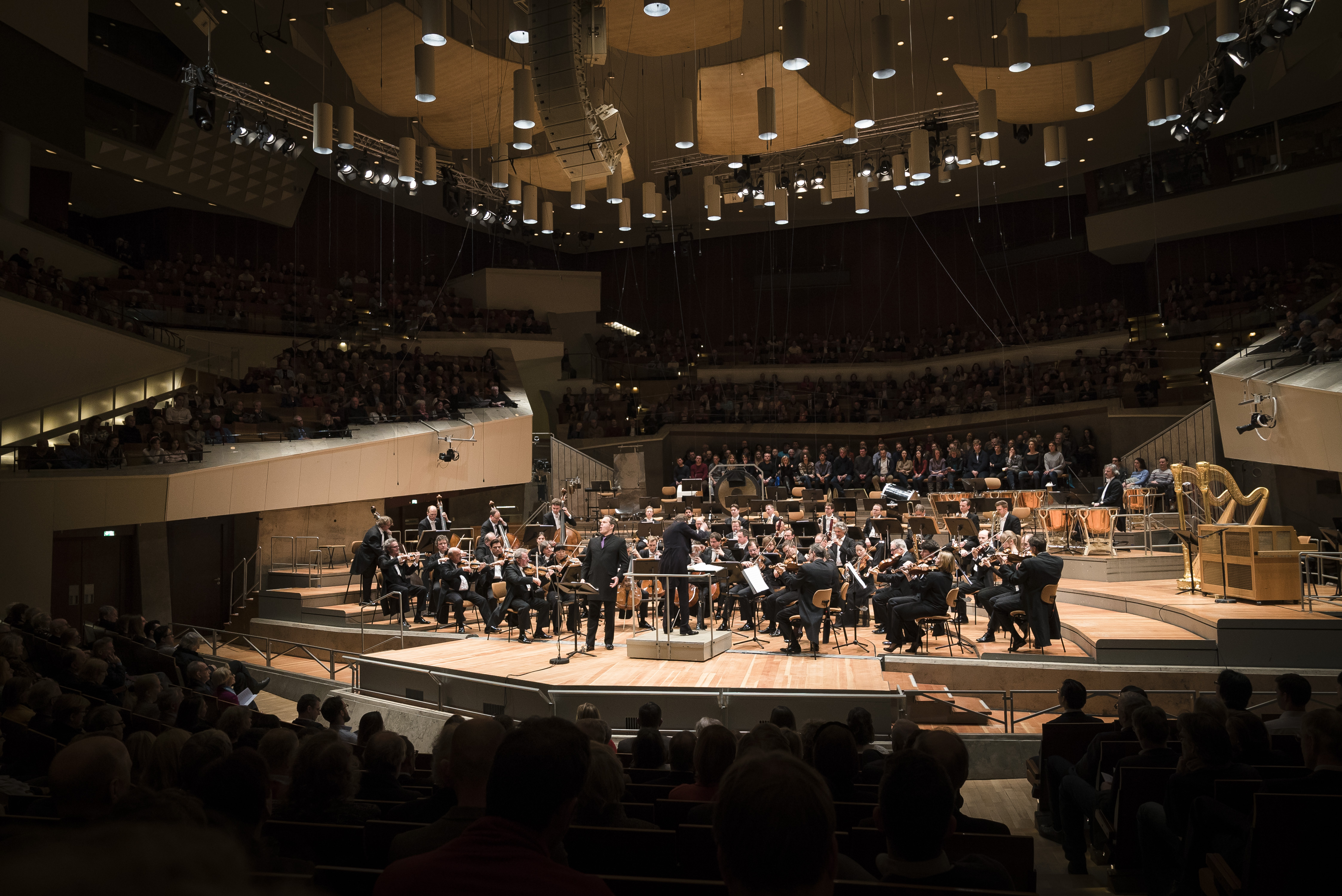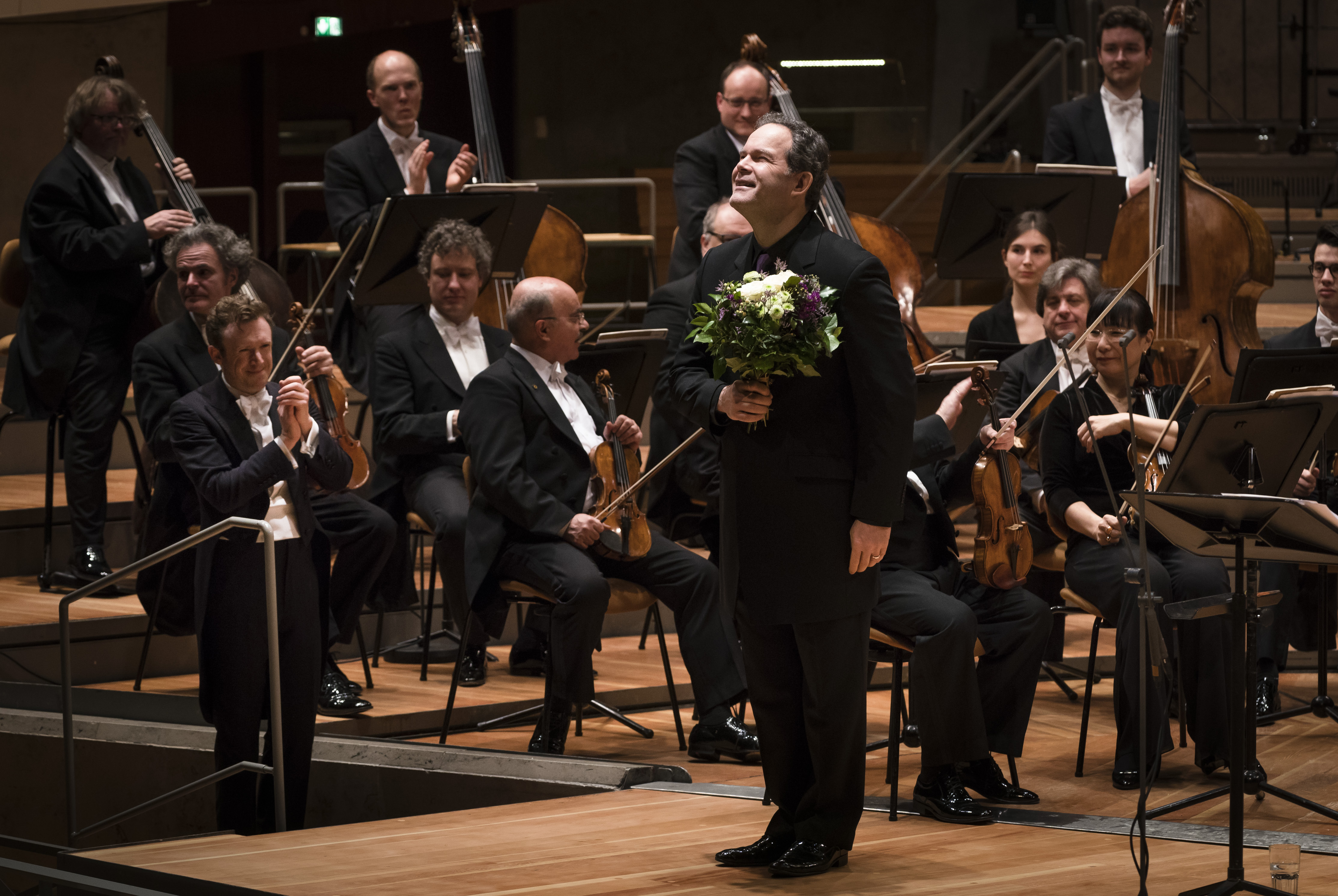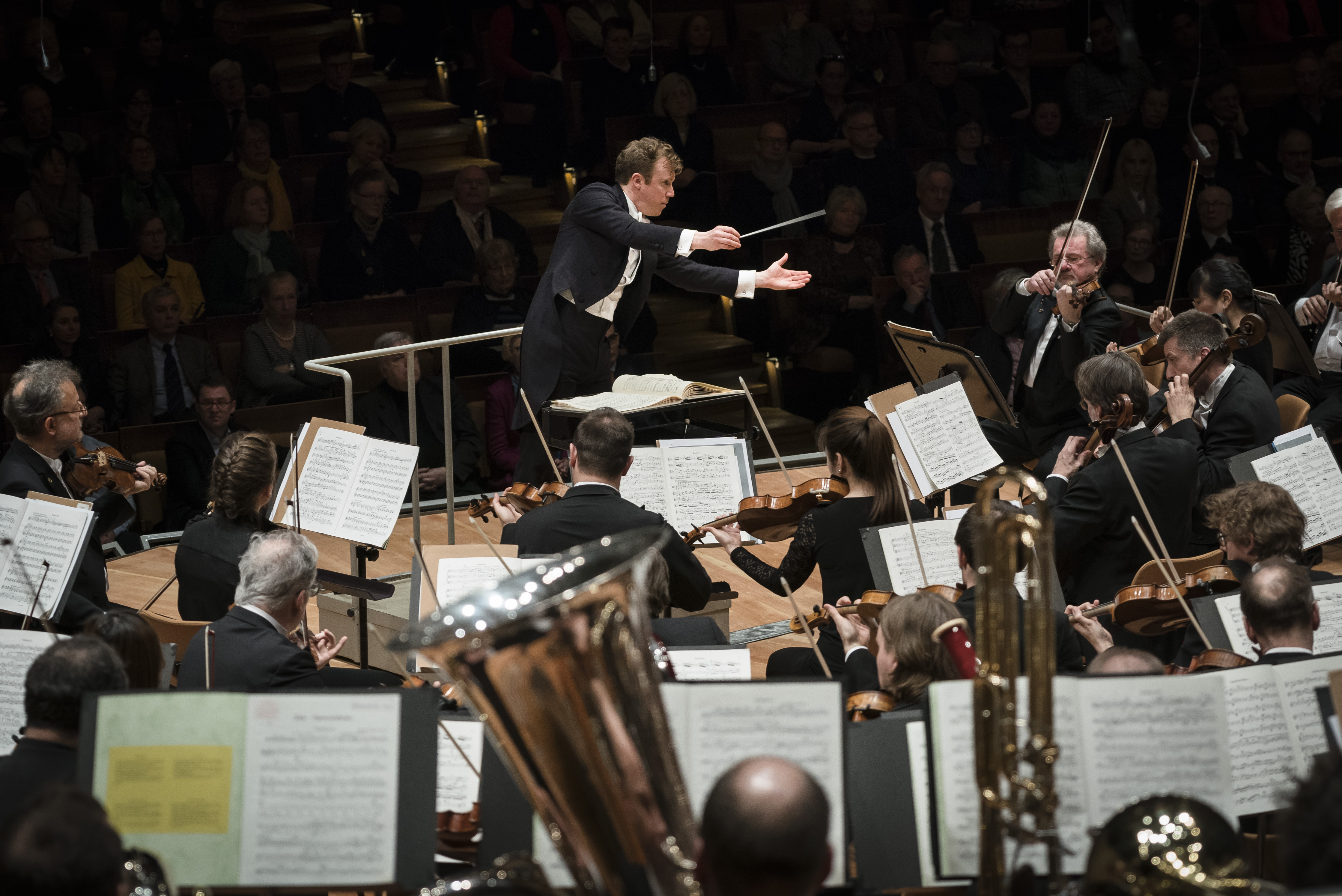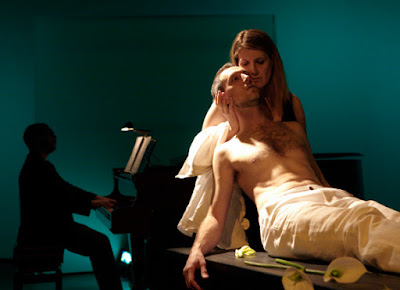
Baritone Gerald Finley and the Berlin Phliharmonic led by conductor Daniel Harding, March 1, 2018. (Photo: (c) Stephan Rabold)
Musical works which take the concept of nature as a theme are deceptive. There’s a perception they’re somehow full of soft and lovely, full of peace and tranquil sounds. Ludwig van Beethoven reminded listeners, however, of the terrible force of nature in his Sixth Symphony (nicknamed”the Pastoral”), with its dramatic, stormy scenes in the Fourth Movement holding particularly memorable power. Titled “Gewitter, Sturm” (Thunder, Storm) it serves as a useful counterbalance.
Something very similar exists with Strauss’s Eine Alepnsinfonie (An Alpine Symphony), op. 64; its musical splendor allows for an abundance of sonic intensity in which the orchestra can reveal a darker side of the nature it simultaneously worships. This doesn’t necessarily always translate into minor key transitions but it does, through the inventive (and expensive) integration of percussion, brass, and woodwinds, paint vivid pictures in the minds of its listeners. So while Strauss’ work is not at all musically incongruent, the work, fifty minutes in total and requiring an immense number of musicians (125 at least), is a study in contrasts, and in knowing how to use such intensity on a very large scale.

Baritone Gerald Finley takes bows following his performance with the Berlin Philharmonic, led by guest conductor Daniel Harding.(Photo: (c) Stephan Rabold)
The Berlin Philharmonic, under the direction of guest conductor Daniel Harding, explored these ideas in a the program featuring the songs of Franz Schubert for its first half. Baritone Gerald Finley, coming off a busy schedule of firsts (I interviewed him for Opera Canada magazine), was in vocally splendid form, delivering Schubert’s works (in arrangements by Reger, Berlioz, and Brahms) with gorgeous delicacy and steely force. His “Erlkönig” (based on a very creepy Goethe poem about a child assailed by the supernatural “Erl King”) was particularly striking for the character-rich modulations Finley exercised, demonstrating unforced flexibility and a deep sensitivity to the material, from his beautiful and thoughtful rendering of “Memnon” to his exquisite performance of “Du bist die Ruh’, D.776, in an orchestration by Anton Webern, as an encore. Finley never lingered too long in a phrase or indulged in vocal flights of fancy, but kept a nice balance between crisp, character-driven diction, a ringing top end, a secure, oaken mid-range, and incredibly smart phrasing; the integration of these traits, combined with a clear love of the material, made for a very splendid and deeply satisfying musical experience. As the program notes of Berlioz’ orchestration (for “Erlkönig”), “(e)very instrument seems to be deployed according to its colouristic and dramatic potential.” No kidding; it’s a phrase that could well be applied to the entirety of the program.
Colour and drama were certainly a big part of the evening’s second half, which featured Eine Alepnsinfonie (An Alpine Symphony), op. 64. Partly inspired by a youthful Alpine adventure Strauss enjoyed, along with his later love of the work of philosopher Friedrich Nietzsche, the work is less of a typical “symphony” in that it forgoes the traditional structure of movements, and instead features twenty-two sections which trace the experiences of a climber, from daybreak to dusk, scaling an Alpine summit. It received a mixed reception at its premiere here in Berlin 1915 (with Strauss himself conducting the Dresden Hofkapelle), with some sneering that it was “cinema music” — but it’s precisely these grandly cinematic qualities which, when brought out properly, with the right amount of love, care, commitment and respect, create such powerful sonic experiences. In all the times I’ve seen the orchestra live, I’ve rarely heard them sound better than last evening, when each element (and Harding squarely treated them as such, related to climate, nature, atmosphere) worked to create a journey as much for spirit as for imagination.

Conductor Daniel Harding leads the Berlin Philharmonic in “An Alpine Symphony” by Richard Strauss, March 1, 2018. (Photo; (c) Stephan Rabold)
Right from the pensive opening (“Nacht” or Night), through the glinting “Am Wasserfall” (At the Waterfall) to the careful “Stille vor dem Sturm” (Calm Before the Storm), and then, of course, onto “Gewitter und Sturm, Abstieg” (Thunder and Tempest, Descent) and back to “Nacht” to close, the orchestra didn’t just lead listeners along the primrose path, but dropped them into the middle of a high, rough, rocky ledge, forming walls of enveloping sounds that underlined the dualistic nature of the work, the relationship (nay, need) for darkness and light between and around one another. Horn players Stefan Dohr and Sarah Willis led their sections with aplomb, shaping their phrases and long musical lines ever so intuitively around woodwinds, harps, and strings, while Harding ensured the busy percussion section wasn’t merely an accessory but a living, breathing organism, colored in shape and expression, the “heartbeat” of the piece. This was far less a pretty excursion into the mountains than a fearsome journey into a ferocious darkness, one that in no way wiped out the capacity for the experience of beauty or majesty, or, in fact, community; more than once various orchestra members could be seen smiling instinctively at one another as phrases approached and receded. There is joy in the darkness, of course; it just sometimes takes bravery (and a few connected spirits) to stand and face it.
And face it, they did; this was the Berlin Philharmonic at its magisterial, ballsy best. I’ve spent many nights in many different symphony halls, listening carefully to many different orchestras, but very, very rare is the moment I will lean my head back, mouth open, and simply… sigh. It happened more than once lastnight. And it was simply beautiful.



